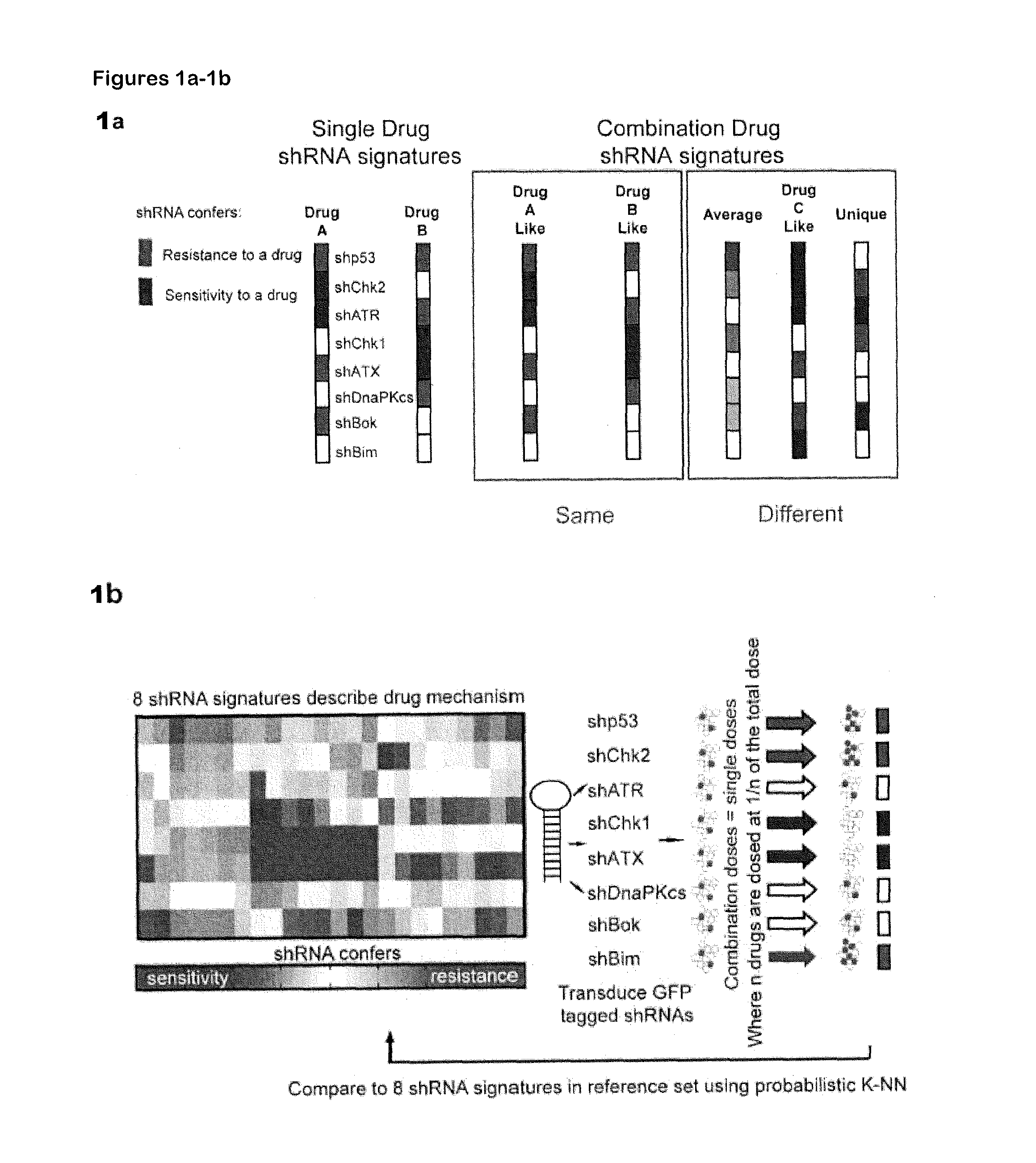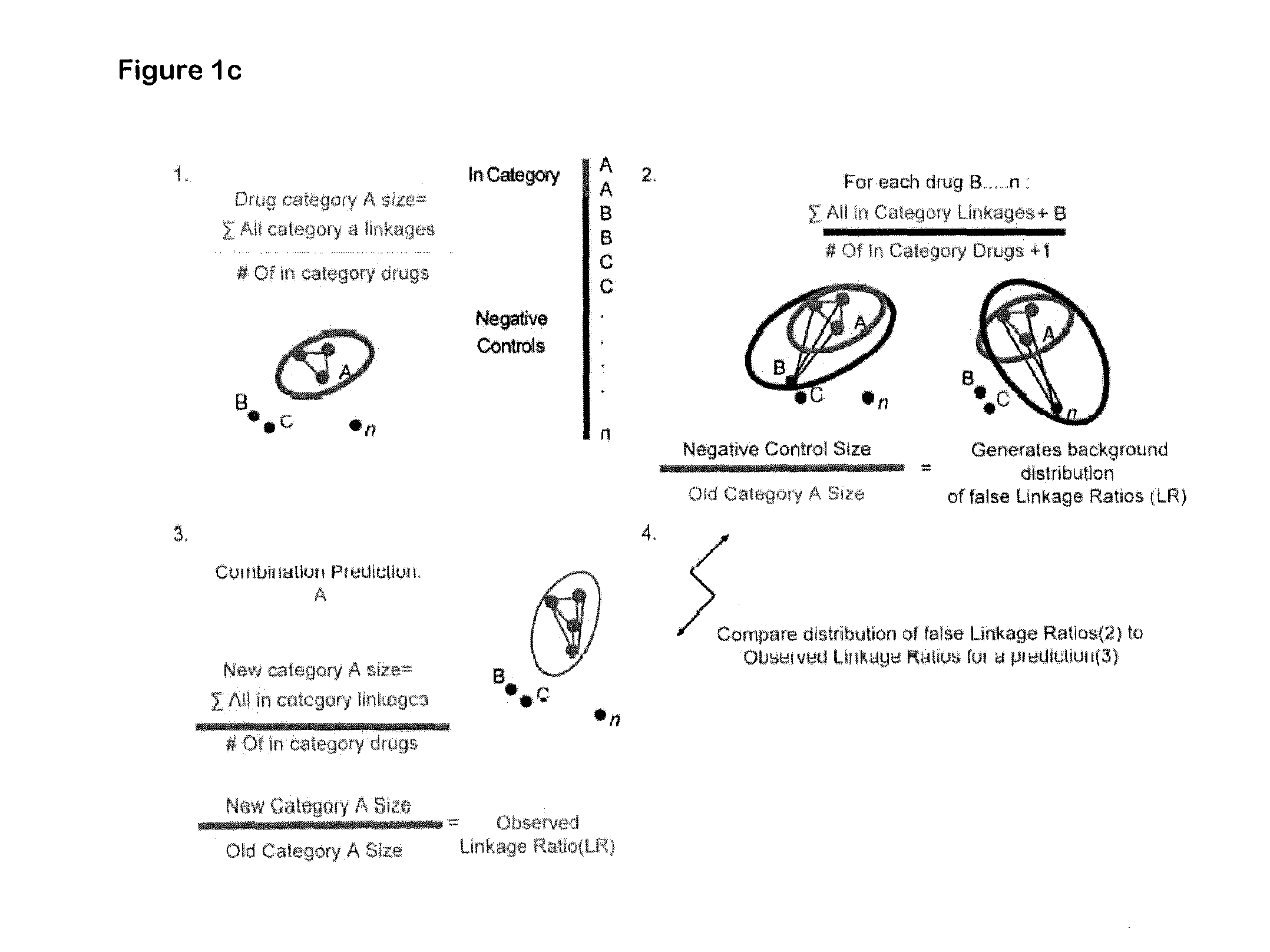RNAi-Based Method of Screening and Characterizing Drug Combinations
a drug combination and rnai technology, applied in the field of rnai-based method of screening and characterizing drug combinations, can solve the problems of poor understanding of the basic mechanisms of combinatorial efficacy, and the failure of cell-intrinsic drug synergy to predict efficacy in clinical trials,
- Summary
- Abstract
- Description
- Claims
- Application Information
AI Technical Summary
Benefits of technology
Problems solved by technology
Method used
Image
Examples
Embodiment Construction
[0019]A description of example embodiments of the invention follows.
[0020]Described herein is use of RNAi-based functional signatures in mammalian cells to test specific hypotheses underlying combination drug mechanisms. Shown herein is that while potently synergistic drug combinations reinforce the cytotoxic action of one component in a manner that highlights drug-specific genetic dependencies, clinically used multi-drug regimens minimize the effect of genetic diversity and thus homogenize response across distinct subpopulations. This finding was confirmed in spontaneously arising lymphomas, where standard combination therapy reduced the variation in drug response between different tumors. Thus, shown herein is that commonly used chemotherapeutic drug combinations are intrinsically “de-personalized” and function by homogenizing therapeutic response across randomized patient cohorts.
[0021]Accordingly, in one aspect, the invention is directed to a method of characterizing a mechanism...
PUM
| Property | Measurement | Unit |
|---|---|---|
| chemo-resistance | aaaaa | aaaaa |
| fluorescent | aaaaa | aaaaa |
| green fluorescent protein | aaaaa | aaaaa |
Abstract
Description
Claims
Application Information
 Login to View More
Login to View More - R&D
- Intellectual Property
- Life Sciences
- Materials
- Tech Scout
- Unparalleled Data Quality
- Higher Quality Content
- 60% Fewer Hallucinations
Browse by: Latest US Patents, China's latest patents, Technical Efficacy Thesaurus, Application Domain, Technology Topic, Popular Technical Reports.
© 2025 PatSnap. All rights reserved.Legal|Privacy policy|Modern Slavery Act Transparency Statement|Sitemap|About US| Contact US: help@patsnap.com



